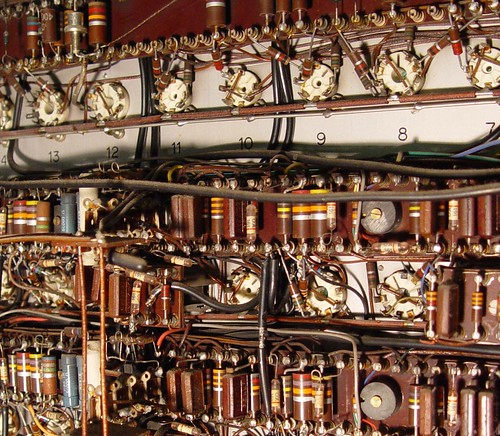Software collecting as part of curating recent science is controversial among museum curators. At the Medical Museion we have started collecting first software items such as epidemiological risk assessment tools. This raises the issue of how to classify and preserve these objects (s. previous post). Just 20 years from now, hardware availability will be critical in order to run today’s software. As to the practical challenges, historians of computing and computer technology museums will probably be able to help us in preserving medical software for the future.
There are a number of museums dedicated to the history of computers and computing: In our case, potential partners could include Danmarks Teknologisk Museum in Helsingør, which currently has a special exhibition about Denmark’s first calculating machine DASK. Of particular interest is the Dansk Datahistorisk Forening’s – so far virtual – datamuseum; this picture is from their image gallery:

There is a fascinating world of computer history out there, including hardware collecting. See the link list of the Dansk Datahistorisk Forening or the list of computer history organizations and museums by Virginia Tech.
Interestingly, Australian computer technology historians Maxwell M. Burnet and Robert M. Supnik move beyond conservation and call for restoration and even simulation of old computer systems. In the Digital Technical Journal they argue “that an understanding of computing’s past is vital to understanding its future, and thus that restoration, rather than just conservation, of historic systems is an important activity for computer technologists”.
Curating and preserving medical software? Inspiration from computer history
Software collecting as part of curating recent science is controversial among museum curators. At the Medical Museion we have started collecting first software items such as epidemiological risk assessment tools. This raises the issue of how to classify and preserve these objects (s. previous post). Just 20 years from now, hardware availability will be critical in order to […]


